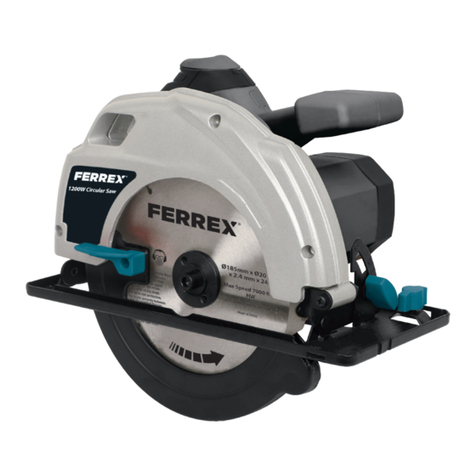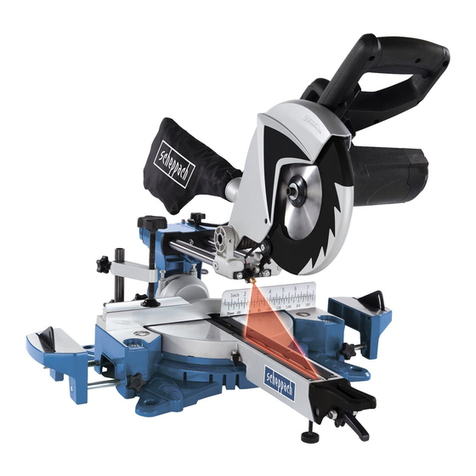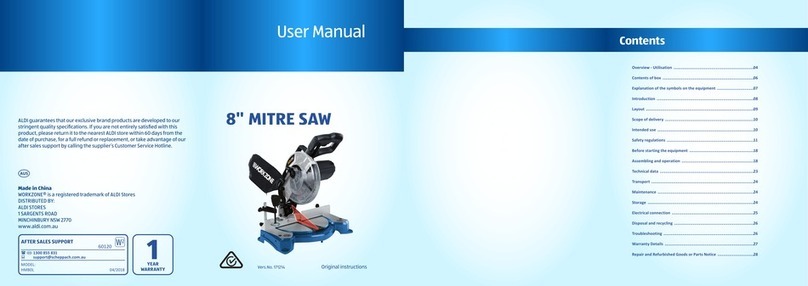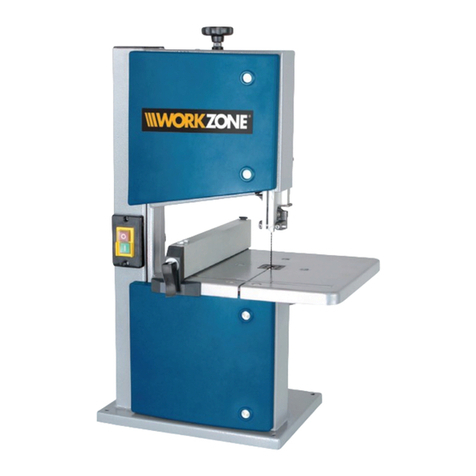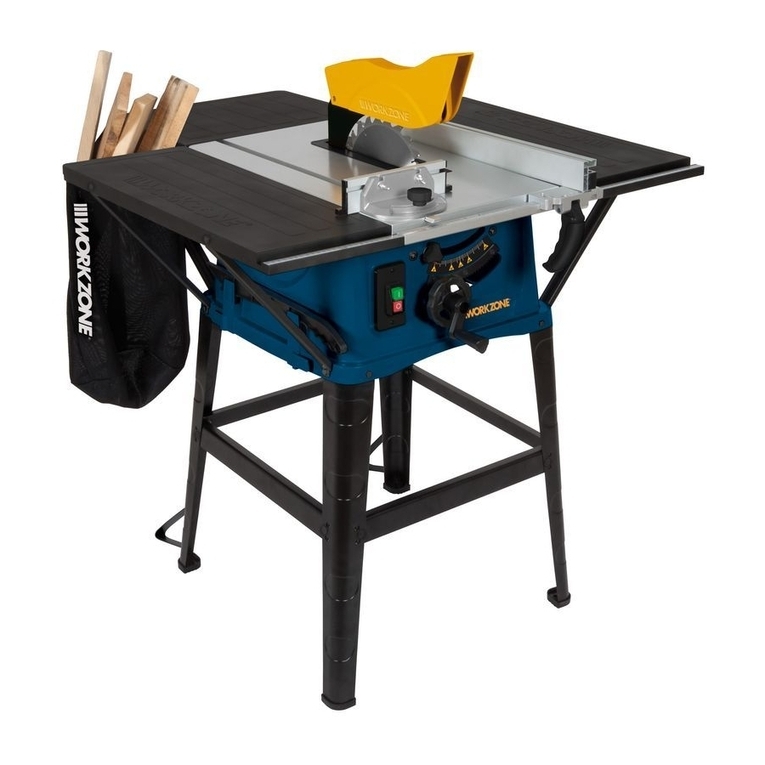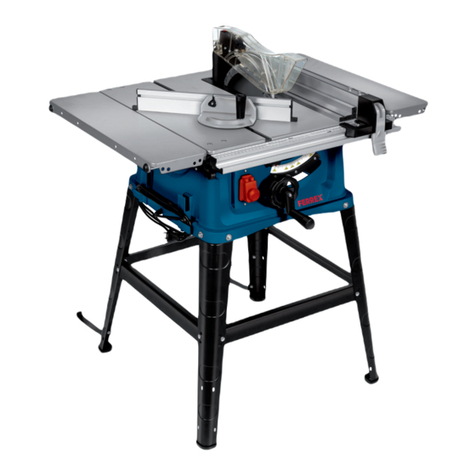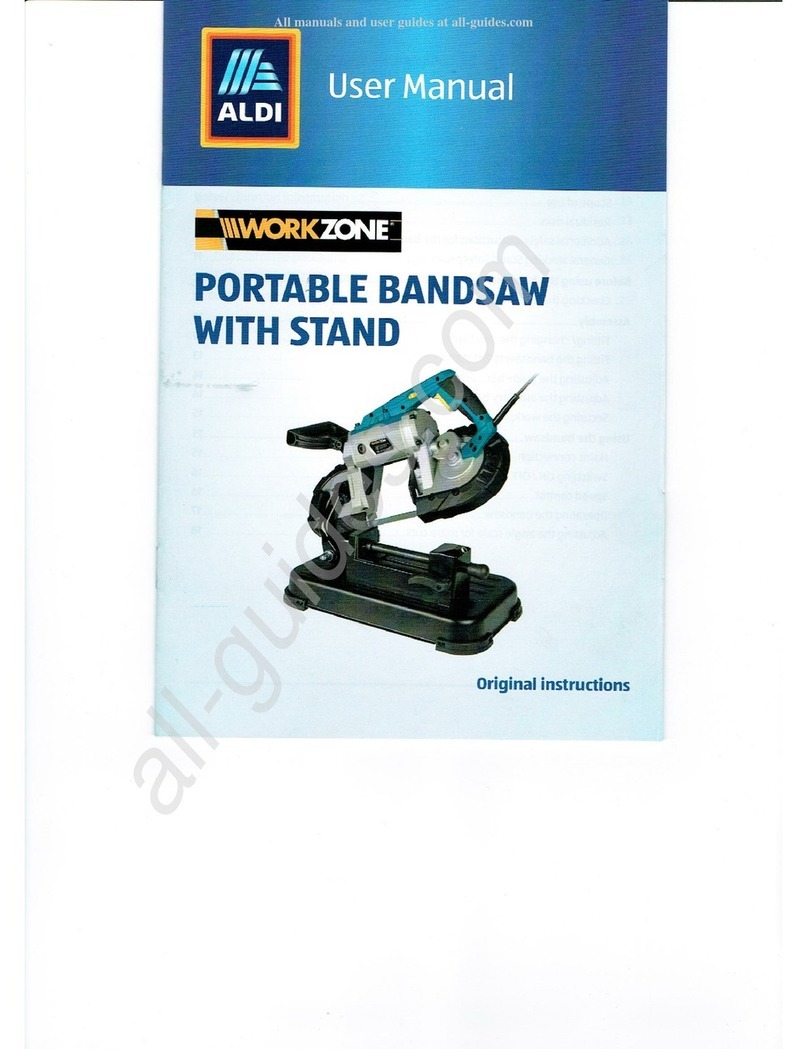
Table of contents
3
Table of contents
Package contents.............................................................................................2
General information ....................................................................................... 4
Reading and storing the user manual ..................................................................4
Proper use..................................................................................................................4
Residual risks.............................................................................................................5
Explanation of symbols .................................................................................. 5
Safety............................................................................................................... 6
Explanation of notes ................................................................................................6
General power tool safety instructions .................................................................6
Safety instructions for reciprocating saws ...........................................................9
Supplementary safety instructions ..................................................................... 10
Product description .......................................................................................13
First use ..........................................................................................................14
Checking the product and package contents.................................................... 14
Use ..................................................................................................................14
Inserting/changing the saw blade...................................................................... 15
Adjusting the saw shoe.......................................................................................... 15
Adjusting the saw alignment.................................................................................17
Adjusting the stroke rate limit ...............................................................................17
Connecting............................................................................................................... 18
Sawing...................................................................................................................... 18
LED work light...........................................................................................................21
Troubleshooting ............................................................................................21
Cleaning and maintenance ...........................................................................22
Cleaning ...................................................................................................................23
Inspecting the product ..........................................................................................23
Maintenance ............................................................................................................23
Storage .....................................................................................................................23
Transport..................................................................................................................24
Technical data ............................................................................................... 24
Noise/vibration information ........................................................................ 24
Disposal ......................................................................................................... 26
Disposing of the packaging ..................................................................................26
Disposing of the product .......................................................................................26
Declaration of Conformity .............................................................................27
